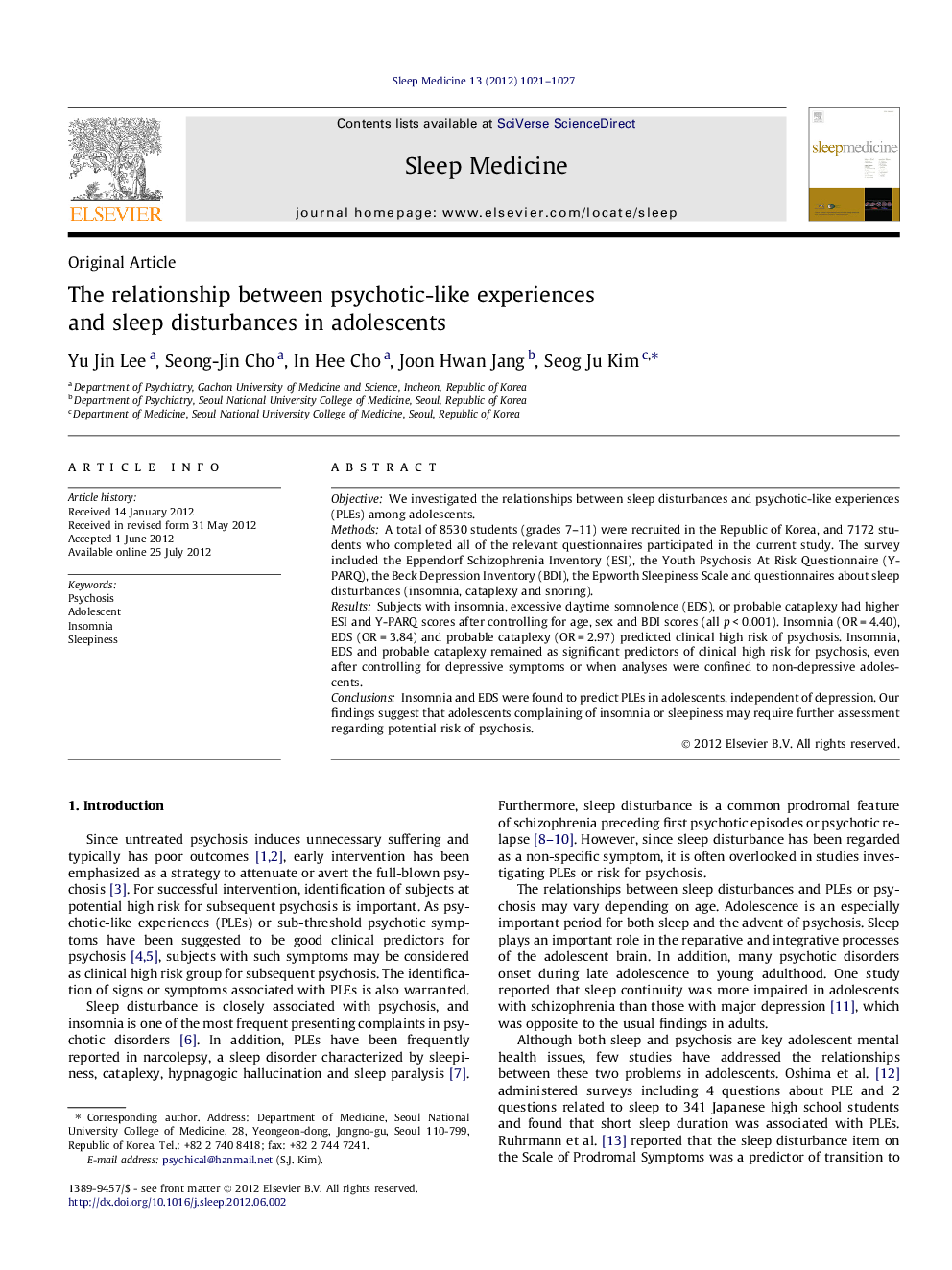| Article ID | Journal | Published Year | Pages | File Type |
|---|---|---|---|---|
| 6061451 | Sleep Medicine | 2012 | 7 Pages |
ObjectiveWe investigated the relationships between sleep disturbances and psychotic-like experiences (PLEs) among adolescents.MethodsA total of 8530 students (grades 7-11) were recruited in the Republic of Korea, and 7172 students who completed all of the relevant questionnaires participated in the current study. The survey included the Eppendorf Schizophrenia Inventory (ESI), the Youth Psychosis At Risk Questionnaire (Y-PARQ), the Beck Depression Inventory (BDI), the Epworth Sleepiness Scale and questionnaires about sleep disturbances (insomnia, cataplexy and snoring).ResultsSubjects with insomnia, excessive daytime somnolence (EDS), or probable cataplexy had higher ESI and Y-PARQ scores after controlling for age, sex and BDI scores (all p < 0.001). Insomnia (OR = 4.40), EDS (OR = 3.84) and probable cataplexy (OR = 2.97) predicted clinical high risk of psychosis. Insomnia, EDS and probable cataplexy remained as significant predictors of clinical high risk for psychosis, even after controlling for depressive symptoms or when analyses were confined to non-depressive adolescents.ConclusionsInsomnia and EDS were found to predict PLEs in adolescents, independent of depression. Our findings suggest that adolescents complaining of insomnia or sleepiness may require further assessment regarding potential risk of psychosis.
